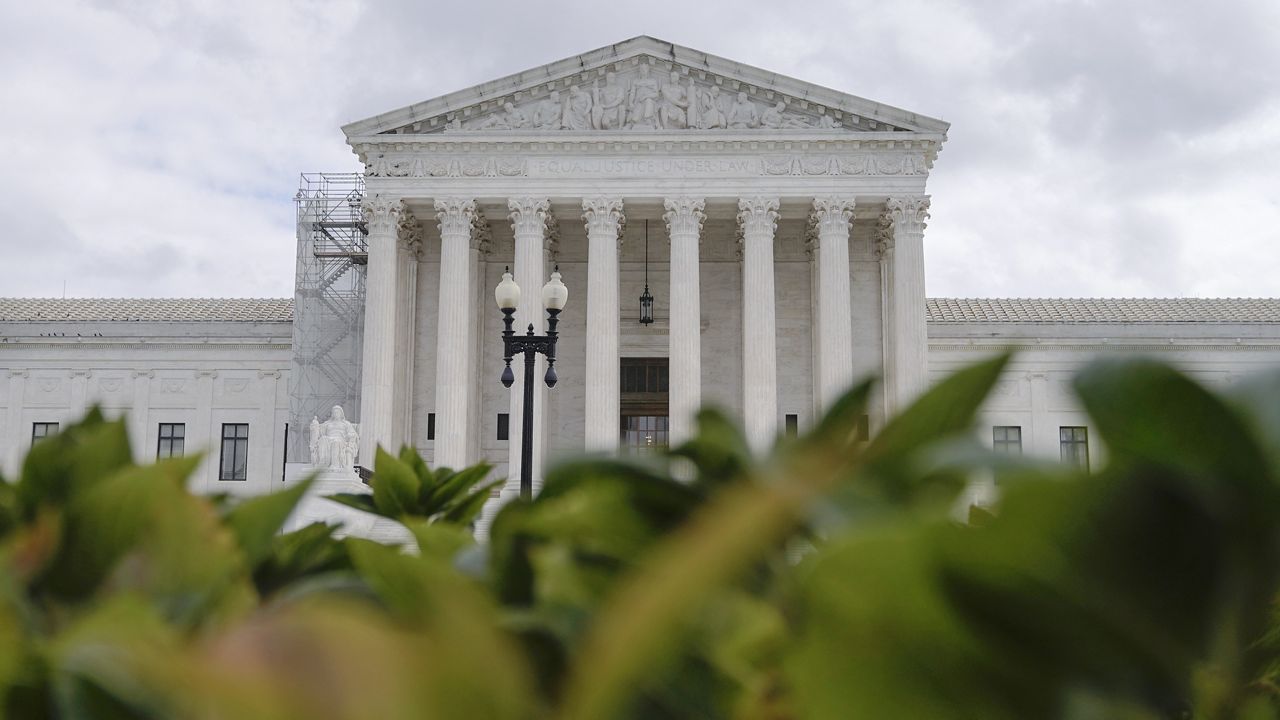Supreme Court justices are rounding out the first week of a fresh term in which cases involving the Second Amendment, politicians and social media and challenges to federal bureaucracy will see their day in the high court.
The 2023-24 term follows two previous ones that saw blockbuster decisions on issues ranging from abortion and affirmative action to gun rights and President Joe Biden’s student loan forgiveness program.
The significant and controversial rulings – not to mention the conversations on ethics surrounding the institution – have invoked reactions across the nation and left the court under heightened attention.
Heading into the new term, its approval rating stands near record lows, with 41% approving of its job performance in a September Gallup poll.
Last week marked three years since then-President Donald Trump tapped now-Justice Amy Coney Barrett to replace the late Ruth Bader Ginsburg on the bench. The move, which shifted the court's ideological balance significantly, paved the way for one of the court's most contentious recent decisions: Dobbs v. Jackson Women’s Health Organization, which overturned Roe v. Wade and allowed states across the country to implement tighter restrictions and even outright bans on abortion.
The appointment also cemented the court’s current 6-3 conservative majority and, as Georgetown Law professor Cliff Sloan points out, proved to be an example of the consequential footprint a president can leave on the highest court in the land.
“President Trump had an enormous impact on the Supreme Court with the three appointments that he had,” said Sloan, author of "The Court at War," a book about President Franklin Delano Roosevelt's impact on the court. “It has led to this conservative supermajority on the Supreme Court that already is a fundamentally different Supreme Court from the one that preceded it.”
And heading into the next election, Sloan said the impact a president can have on the court will not be lost on voters, adding the overturning of Roe v. Wade in particular will continue to weigh on their minds.
“The direction of the Supreme Court is an extremely important issue that will be on the ballot. And I think that voters will recognize that,” he said. “We've seen it as a tremendous motivator for voters in the midterms, in the judicial election in Wisconsin.”
Todd Belt, a professor and the Director of Political Management at George Washington University, agrees.
“I think this is going to be really important, because we have some justices who are getting up there in age – not as many as we had last time around, but I think it's becoming more and more important, especially in the wake of the Dobbs decision,” Belt said. “I think it will affect voters’ considerations more.”
Belt points out conservative-leaning Justices Samuel Alito and Clarence Thomas will both be in their mid-70’s on inauguration day in 2025, meaning retirements during the next White House occupant’s term are not completely out of the question.
But the outcome of the election itself – and subsequently which party controls the White House – could have an impact on such decisions. Sloan said that although he is careful not to speculate about what is in the heads of justices, there “certainly seems to be a correlation between the timing of retirement announcements and the party that's in power.”
“The fact that we had Ruth Bader Ginsburg hold off her retirement, a lot of people are looking at that, and I can imagine a lot of members of the court are looking at that, wanting to make sure that their legacy is retained,” Belt said.
As Belt points out, liberal-leaning Ginsburg’s decision not to step down during the Obama administration – when a Democratic president would have chosen her successor – led to Trump’s appointment of conservative-leaning Barrett to take her place upon Ginsburg’s death in 2020. Less than two years later, on the other hand, liberal-leaning Justice Stephen Breyer chose to retire at a time when Democrats controlled both the White House and the Senate.
“I think that because of that,” Belt said of Ginsgurg’s decision, “it's become more of a concern of justices.”
“I think that [Chief Justice] John Roberts’ statement that there are no Democratic judges and there are no Republican judges, they're just judges – I think that the way things have turned out really undercut that statement,” he added.
In an interview with ProPublica released on Sunday, Biden alluded to the importance of the election in terms of the court, saying he worries about it if the “MAGA Republicans” win.
“Because I know that if the other team, the MAGA Republicans, win, they don’t want to uphold the rule of law,” he said.
Sloan, who served as an Associate White House Counsel to President Bill Clinton and steered Breyer's confirmation to the court, noted that this is not a new phenomenon.
He pointed to former Justice Potter Stewart – who was appointed by former Republican President Dwight Eisenhower – stepping down shortly after the transition from the Carter administration to the Reagan administration. Former Democratic President Jimmy Carter is the only U.S. president to have served a single full term and not had the opportunity to appoint someone to the high court.
While Sloan and Belt believe this all has the potential to impact decisions at the top of the ticket in next year’s presidential election, they make the caveat that while president’s do have a lot of influence in the matter, which party controls the Senate – the body that confirms such appointments – is a key factor.



